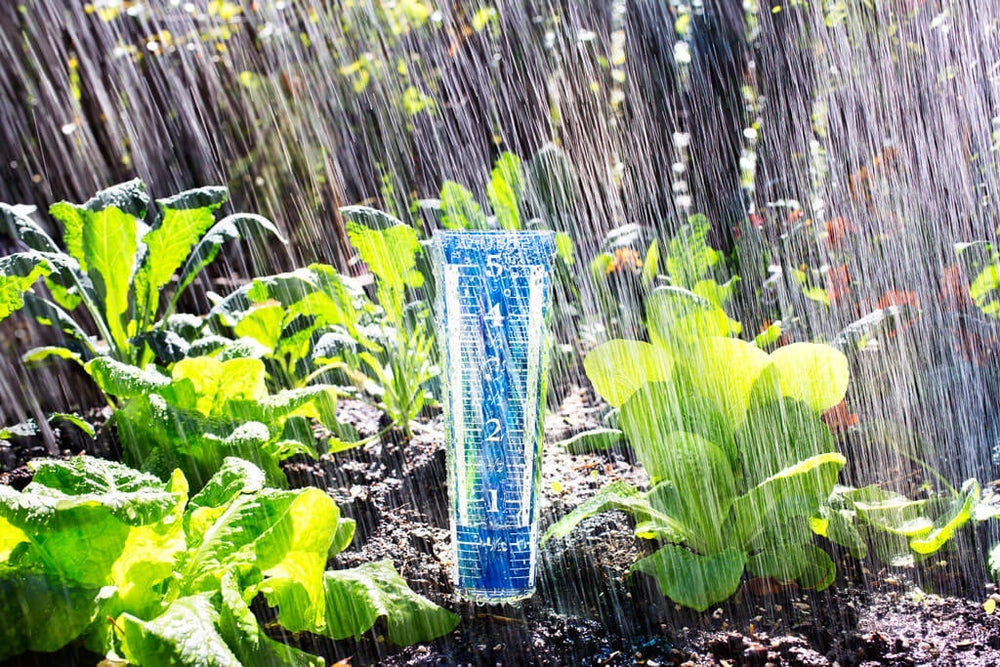Soil, plants, sun, and water—that's all you really need to grow a garden. But I've found there are some tools that can make gardening, already one of my favorite pastimes, even easier and more enjoyable. Here are five I love, each of which (happily for my wallet) costs less than $40 (four are less than $25!) and would make a wonderful surprise for the gardener in your life — even if that happens to be yourself.

A rain gauge.
Somehow the local weather station's rain report never quite matches up with what seems to fall on my garden, which is one reason I love my rain gauge. It tells me exactly how much moisture Mother Nature has gifted my veggies and herbs—and how much I'll need to add myself to equal that inch or two of water they need every week. I keep my gauge in the middle of one of my 4×8 raised beds and check it every morning, just in case I slept through an overnight drizzle.

A 1-touch watering nozzle.
Of course, there are weeks during which the rain gauge remains empty and dry, so I end up spending some quality time with the hose. After wrangling with a trigger-style nozzle for a number of years, I recently discovered the wonders of a 1-touch watering nozzle. Instead of having to hold the handle down, I simply flip the little lever with my thumb and voila! A steady stream of water. When the plants have had enough, a second flip turns the water off. Brilliant. You can get these with a dozen different spray options, but the only ones I use are "shower" and "stream." The "shower" setting is the perfect combo of gentle and thorough; I use this setting for most watering. The "stream" setting sends a jet flying quite a distance—just the thing for the blueberry and pomegranate bushes our hose can't quite reach.
A compost thermometer.
It wasn't long after my husband discovered I'd used his favorite meat thermometer to measure the temperature of a curing bale of straw that I ordered a compost thermometer. This gadget not only makes it easy to tell when my bale is fully conditioned, but it also tells me if the compost pile is still cooking—or ready to take its place in the garden. Bonus: It's longer than the oven thermometer, so it goes more deeply into the bale or pile to give a more accurate reading. And, of course, my husband is a lot happier. After all, who wants to measure the temperature of roast chicken with a gadget that's been sitting in a pile of aging leaves?

A soil knife.
In terms of handy garden tools, my hands-down favorite is my soil knife. With its serrated blade and indented side, it serves beautifully as a planting trowel, a weed-cutting knife, a matted-root hacker, a handy way to dig out plants that need to be relocated or divided, even a tool for prying rocks out of the ground. (It's also just the thing for scraping the soil off the edges of my raised beds so they look a little neater.) And given my habit of tossing it on the ground and forgetting about it, having one with a brightly colored handle is a real bonus. If you want to spend a little more, you can get soil knives with protective sheathes, notches for cutting twine, even depth markings to make it easy to measure as you dig.
A sun calculator.
Like many gardeners, my eyes are bigger than my garden. I have a tendency to bring home more plants than I have room for in my raised beds, so the trick is always figuring out where else I might put them. Does that spot over by the corner of the carport get enough sun to support, for example, that ray-hogging tomato I just adopted? To find out, I turn to my sun calculator. I just plunk it in the ground and it measures the amount of light that particular area gets throughout the day. It's also handy as the seasons change and the sun drops lower in the sky, since the parts of my yard that boast "full sun" in July can't always say the same in the long shadows of November. In the same vein, a spot that stays shady in summer may become much sunnier as leaves fall and cool weather sets in, allowing for a fantastic fall garden. It's quite a handy way to maximize your growing space, so you can bring even more plants into your life. And really, what's better than that?





 Herbs
Herbs
 Vegetables
Vegetables
 Fruit
Fruit
 Flowers
Flowers
 Succulents
Succulents

